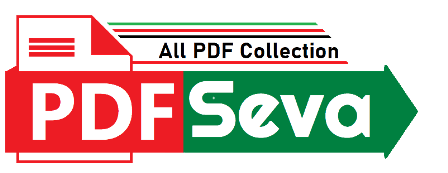
ad here
786 Download
1 year ago
In the intricate world of medical devices, where precision and quality are paramount, adhering to stringent standards is not just a choice but a necessity. One of the cornerstones of quality management in the medical device industry is ISO 13485 Medical devices.
ISO 13485 is an internationally recognized standard specifically designed for the medical device industry. It provides a framework for the establishment and maintenance of a robust Quality Management System (QMS). The standard covers various aspects, including design, production, installation, and servicing of medical devices.
One of the primary advantages of ISO 13485 is its global recognition. This standard provides a common language for regulatory compliance in the medical device sector, making it easier for organizations to navigate international markets.
For medical device manufacturers, ISO 13485 is often a prerequisite for regulatory approvals. Regulatory bodies worldwide, such as the European Union and Health Canada, view compliance with ISO 13485 as a crucial factor in granting market access.
ISO 13485 fosters a culture of quality within organizations. By adhering to this standard, companies demonstrate a commitment to providing safe and effective medical devices, thereby building trust with regulators, healthcare professionals, and end-users.
At the core of ISO 13485 is the establishment and maintenance of an effective QMS. This includes processes such as risk management, document control, and traceability. A robust QMS ensures that every stage of the product lifecycle is managed with a focus on quality.
ISO 13485 places a significant emphasis on leadership commitment. Top management is expected to be actively involved in quality management, ensuring that quality objectives are established, monitored, and aligned with the organization’s overall goals.
The allocation of resources, including personnel, infrastructure, and the work environment, is a crucial component. Adequate resources are essential to maintain and continually improve the effectiveness of the QMS.
From design and development to production and servicing, ISO 13485 outlines specific requirements to ensure that medical devices meet both regulatory and customer requirements. This includes processes for validation, verification, and validation of product designs.
Continuous improvement is a core principle of ISO 13485. Organizations must establish processes for monitoring and measuring quality metrics, conducting internal audits, and implementing corrective and preventive actions.
The journey towards ISO 13485 compliance often begins with a gap analysis. This involves a thorough assessment to identify areas where current practices deviate from ISO 13485 requirements.
Developing comprehensive documentation is a foundational step. This includes a Quality Manual, procedures, and work instructions. The documentation should reflect the organization’s unique processes while aligning with ISO 13485 requirements.
Ensuring that personnel at all levels are adequately trained and aware of ISO 13485 requirements is crucial. Training programs should cover the QMS, relevant procedures, and stress the importance of adherence to quality standards.
Rolling out the QMS across the organization is a significant step. Close monitoring of its effectiveness through internal audits helps identify areas for improvement and ensures ongoing compliance.
Engaging a reputable certification body to conduct an external audit is the final step. Achieving ISO 13485 certification demonstrates to stakeholders, customers, and regulatory bodies that the organization has a robust QMS in place.
Implementing ISO 13485 requires a significant allocation of resources, both in terms of time and personnel. Organizations must be prepared for this investment.
Achieving and maintaining compliance necessitates a cultural shift within an organization. Employees at all levels must embrace a quality-focused mindset.
ISO 13485 certification enhances the organization’s credibility and provides easier access to global markets. Many countries and regulatory bodies recognize this certification as a prerequisite for market entry.
The implementation of ISO 13485 often leads to enhanced product quality. This, in turn, reduces the risk of product recalls, regulatory actions, and ultimately protects the reputation of the organization.
Certification instills confidence in customers, demonstrating a commitment to producing safe and effective medical devices. This can lead to increased customer satisfaction and loyalty.
In an industry where the stakes are high and precision is non-negotiable, ISO 13485 stands as a guiding light. Beyond being a regulatory requirement, it is a roadmap for creating a culture of excellence in the design, production, and servicing of medical devices.
Whether you are a key player in the medical device industry or an aspiring entrant, understanding ISO 13485 is not just a compliance necessity; it’s a commitment to the highest standards of quality in healthcare. As technology advances and the healthcare sector continues to evolve, ISO 13485 remains a steadfast companion, ensuring that the focus on quality and patient safety remains unwavering.
| PDF Name: | Iso-13485 |
| Author : | LatestPDF |
| File Size : | 431 kB |
| PDF View : | 55 Total |
| Downloads : | 📥 Free Downloads |
| Details : | Free PDF for Best High Quality Iso-13485 to Personalize Your Phone. |
| File Info: | This Page PDF Free Download, View, Read Online And Download / Print This File File At PDFSeva.com |
Copyright/DMCA: We DO NOT own any copyrights of this PDF File. This Iso 13485 Medical devices PDF Free Download was either uploaded by our users @LatestPDF or it must be readily available on various places on public domains and in fair use format. as FREE download. Use For education proposal. If you want this Iso 13485 Medical devices to be removed or if it is copyright infringement, do drop us an email at [email protected] and this will be taken down within 24 hours!
© PDFSeva.com : Official PDF Site : All rights reserved
